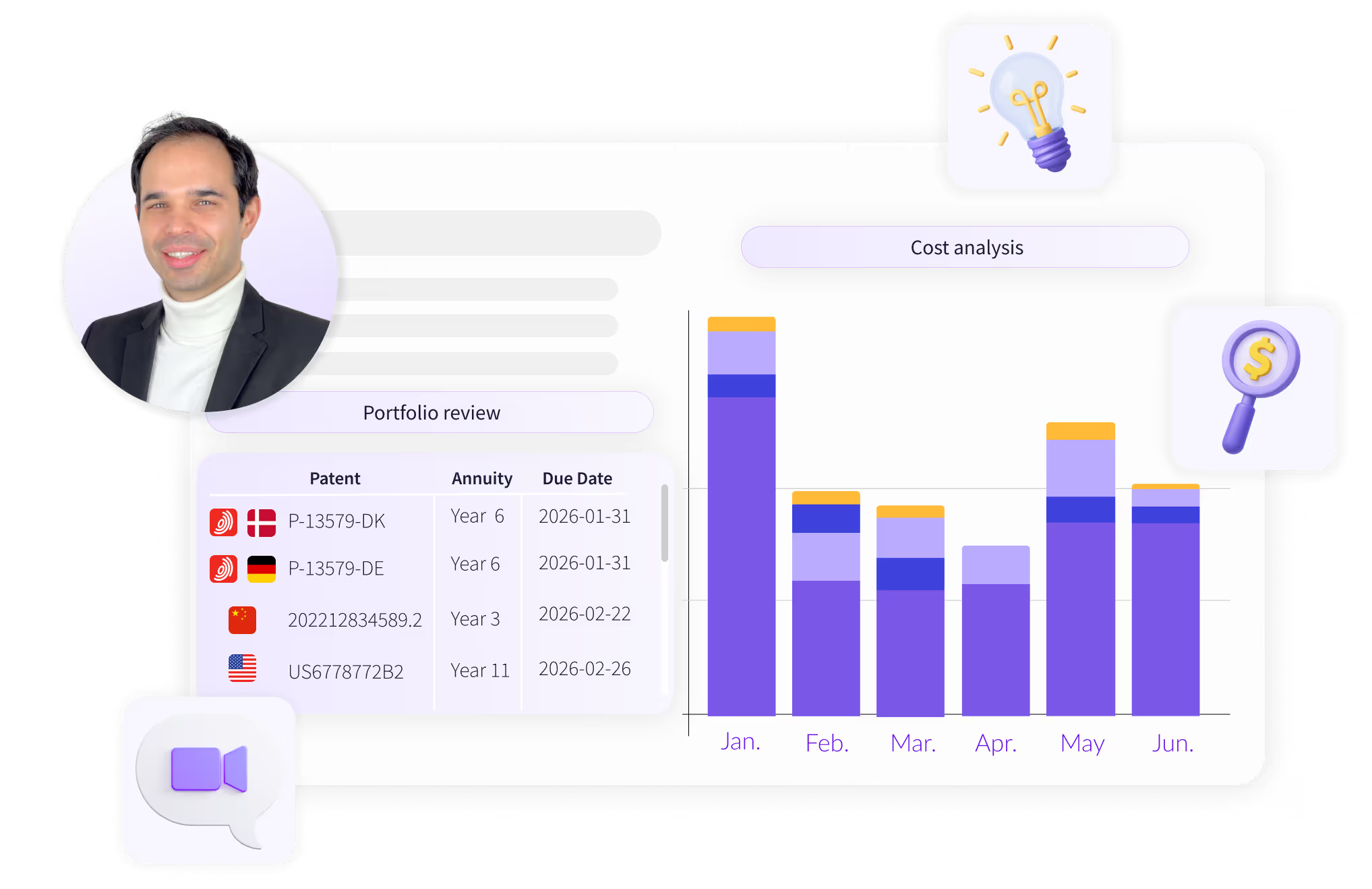TRY OUR NEW (FREE) IP RENEWAL COST CALCULATOR
CalculateOver half of all patents aren’t maintained to the end of their 20-year term, they’re abandoned. According to the USPTO, this often happens because required patent renewal fees go unpaid. But in many cases, abandonment is not a mistake, it’s a decision.
When a patent is abandoned, the invention becomes public domain and is no longer protected. While this might seem like a loss, it actually provides useful insight. Abandoned patents can help reveal where innovation is slowing down, where companies are shifting focus, and how industries adapt to change.
For patent holders, understanding these trends isn’t just interesting, it’s a valuable way to make smarter intellectual property renewal decisions.
Patent abandonment usually falls into two categories: unintentional and strategic. In both cases, the outcome is the same, loss of legal protection.
Here are the top reasons patents are abandoned:
Large companies often let patents lapse on purpose. IBM, for example, abandoned more than 4000 patents in a single year to refocus its innovation efforts and reduce unnecessary costs. For these firms, patent renewal costs are weighed carefully against long-term business value.
Not every patent is worth renewing. In fact, regularly pruning your portfolio can sharpen your innovation edge. Research from Oxford Brookes University found that while abandoning patents in core knowledge areas generally reduces innovation performance, companies with strong R&D capabilities or access to external knowledge, also known as high absorptive capacity, can actually benefit from doing so.
For these firms, strategic abandonment becomes a tool for smarter innovation. This means more than just letting patents lapse:
To use this approach effectively, conduct regular IP audits. Many innovative companies assess their portfolios annually, deciding which patents to maintain, abandon, or license. Done right, this ensures your intellectual property renewal strategy actively supports long-term innovation, instead of draining resources.
Patent abandonment can serve as a window into a company’s innovation process. In early R&D phases, businesses often file broadly across different ideas. Later, they may drop patents that no longer fit evolving goals.
This pattern reflects the balance between exploration (testing new ideas) and exploitation (building on successful ones). High abandonment rates often mean a company is experimenting aggressively and refining its focus over time.
Citation analysis also shows that many abandoned patents are never cited again, marking them as technological dead ends. But others are cited later, showing that some ideas are abandoned too early, only to prove useful later.
Abandonment patterns vary across industries. In fast-evolving sectors like software or electronics, patent lifespans tend to be shorter. Rapid product development and shorter market cycles lead to more patent annuity drop-offs.
In contrast, pharmaceutical and biotechnology patents are typically held for longer periods. The high cost and lengthy development process, often exceeding 10 years, mean each patent is tied to a major R&D investment. However, even in these fields, patents may be abandoned due to failed clinical trials or because maintaining unused formulations no longer justifies the patent annuity fees.
A common challenge is that by the time a drug finally reaches the market, much of its 20-year patent term has already elapsed. For example, several key patents protecting Novo Nordisk’s diabetes drug Ozempic are set to expire in 2026, despite the drug not yet being available in many global markets.
A DrugPatentWatch study shows that many abandoned pharma patents represent shelved projects or pipeline pivots. Similarly, a ScienceDirect review found that abandonment often aligns with the maturity or decline phase of innovation, following a classic S-curve pattern.
Abandonment doesn’t erase a patent’s influence. Even expired or abandoned patents remain in public databases and continue to shape the IP landscape.
Patent examiners use them as prior art to evaluate the novelty of future applications. A University of Richmond study found that thousands of abandoned applications are cited in later patent examinations.
This means:
Even without enforcement power, these documents continue to impact how new ideas are protected.
Monitoring abandoned patents helps you spot trends, threats, and opportunities. It also prevents you from unknowingly duplicating past inventions. Here are useful tools and platforms:
Advanced users may also explore citation mapping and main path analysis, methods that track how knowledge flows through patent networks and where it breaks off.
Tracking abandonment patterns gives you a competitive edge when planning patent renewal budgets or prioritizing filings.
Abandoned patents offer signals, not just statistics. They show what others no longer consider worth protecting and help you benchmark your own decisions.
If you’re unsure whether to continue paying patent annuity fees, reviewing abandonment patterns in your sector can provide useful context. For example, if you notice that competitors are allowing similar patents to lapse, this could indicate a shift in market relevance, or it could present an opportunity for you to acquire unused IP or enter a less competitive market. On the other hand, if your technology is still strategically valuable, this is a sign to strengthen protection and consider regional expansion.
Patent renewal decisions should consider:
By treating abandonment data as a strategic input, you can optimize how you manage your IP assets and renewal schedule.
When patents are unintentionally abandoned, it’s often due to missed patent renewal deadlines or mismanaged systems. And when they’re abandoned for strategic reasons, it’s usually to cut costs or shift focus.
PatentRenewal.com helps patent holders do both, prevent mistakes and lower annual costs. Our automated platform handles patent renewals globally. Customers save up to 50% on patent annuity fees while keeping full control over their intellectual property renewal strategy.
Learn more about our solution and explore how we help businesses like yours avoid unnecessary abandonment and maintain a competitive IP portfolio.
Interested in a free IP renewal consultation? Benchmark your current IP renewal setup and costs against market standards.
